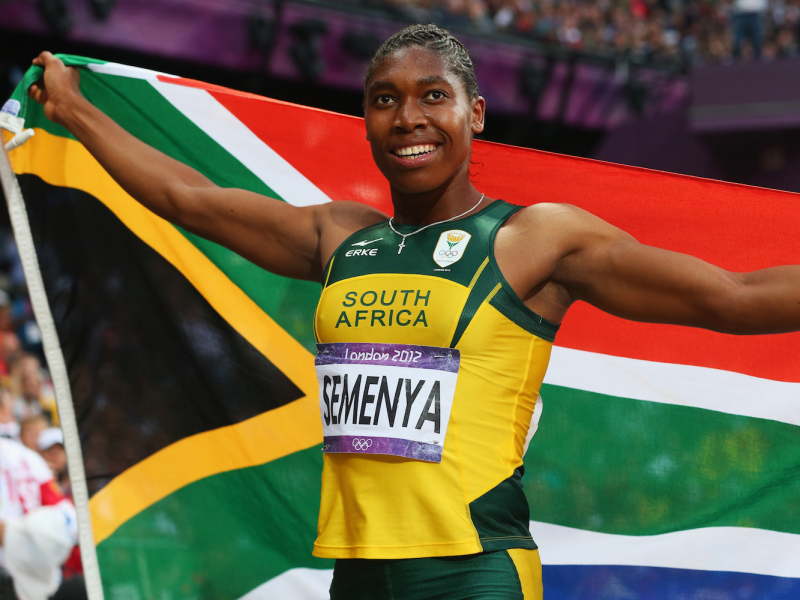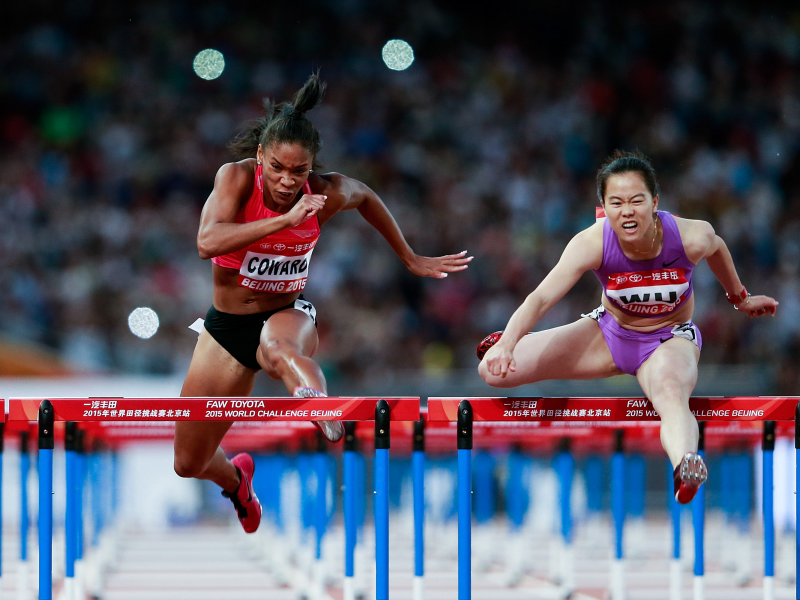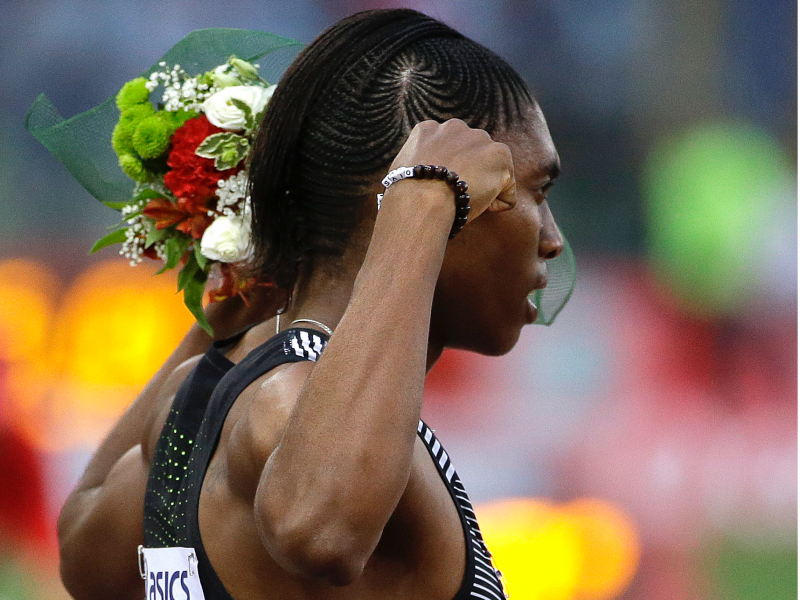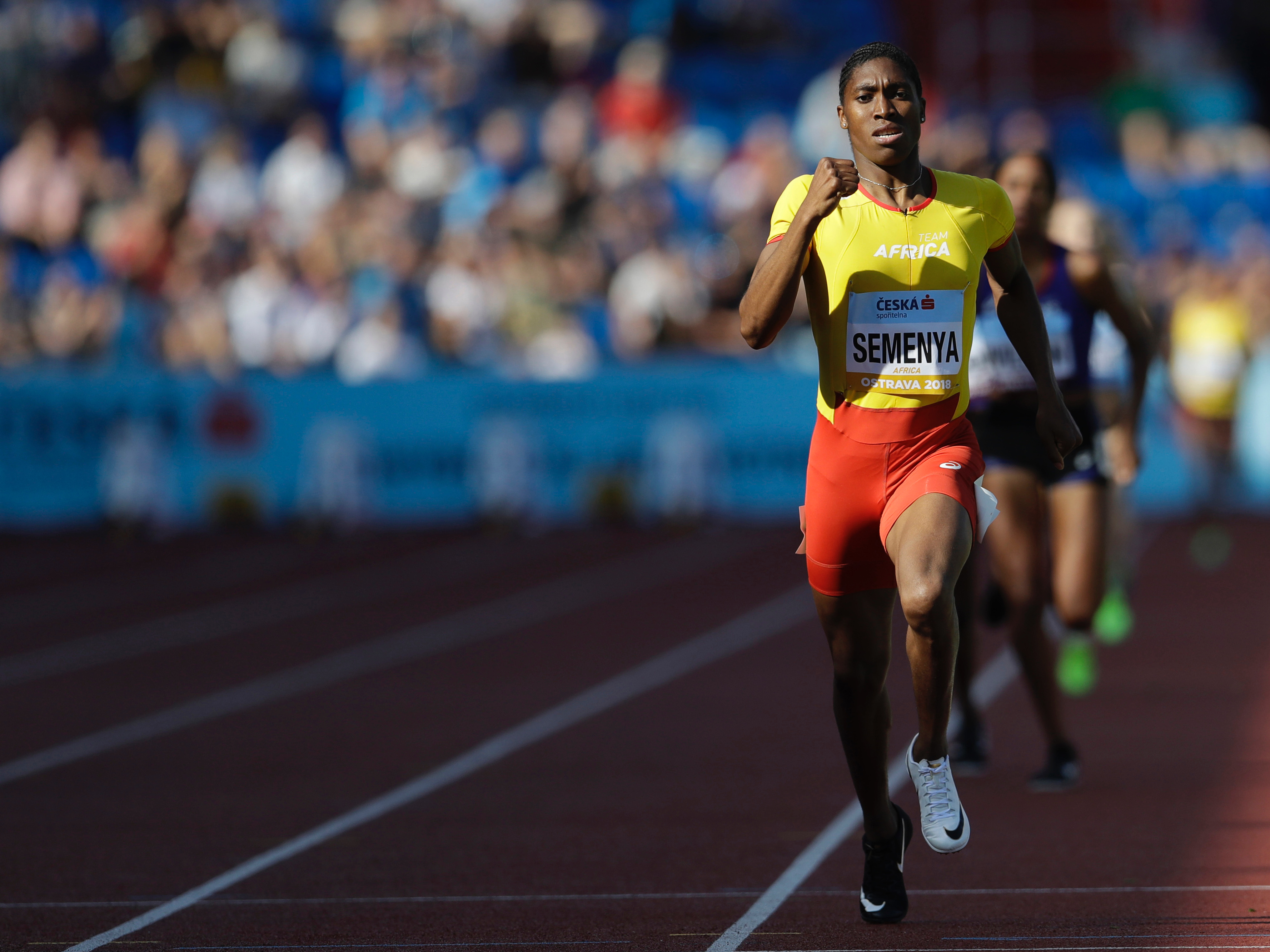- Olympic gold medalist Caster Semenya’s body naturally produces testosterone at levels higher than the average woman’s body.
- This prompted the International Association of Athletics Federations (IAAF) to dictate that Semenya must take medication to reduce her testosterone levels in order to continue competing.
- The Court of Arbitration for Sport sided with the IAAF, and now a scientist with the IAAF has presented research that supports the organization’s new rules as well.
- But according to two outside experts, the new policy presents a slippery slope, since it raises questions about what it really means to be a woman.
- Visit Businessinsider.com for more stories.
Caster Semenya hasn’t lost an 800-meter running race since 2015. The three-time South African world champion has won two Olympic gold medals.
But on May 1, Semenya lost her ability to compete at the international level.
Because Semenya’s body naturally produces testosterone at levels higher than the average woman’s body, the International Association of Athletics Federations (IAAF) decided she must take medication to reduce her testosterone in order to continue running internationally. The Court of Arbitration for Sport (CAS) sided with the IAAF.
Semenya has refused to meet the new demands, so she won’t be allowed to compete in IAAF-approved events, which are the only qualifiers for the Olympic track and field competitions.
On Tuesday, Angelica Lindén Hirschberg, who chairs the group of medical experts advising the IAAF on this issue, presented research that shows top female athletes in general are more likely to have higher-than-average testosterone levels. In a talk at the annual meeting of the European Society of Endocrinology, Hirschberg said sporting organizations are justified in taking those differences into account for rule-making.
"Elite female athletes want to compete fairly against other women, not those who have a more male physiology," she said in a press release."In the interests of fairness in sport for all, a policy that responds with sensitivity to those who may have a condition causing high testosterone is needed."
But Katrina Karkazis, a bioethicist at Yale University, told Business Insider that this research is cause for concern - not only because the IAAF are using their own internal experts to provide evidence in favor of their ruling, but also because the organization's new rules raise big questions about gender identities.
"It relies on folksy ideas about who's really a woman and what traits make you a woman," Karkazis said.
'Differences of sexual development'
Semenya is considered to have "differences of sexual development" (DSD), a blanket term for conditions in which a person's reproductive organs or genitals don't develop as expected.
Sometimes, individuals with DSD are called intersex, meaning they were born with "a reproductive or sexual anatomy that doesn't seem to fit the typical definitions of female or male," according to the Intersex Society of North America. Females with DSD can sometimes have one X and one Y chromosome, or under-developed ovaries or clitorises.
In some cases, DSD can lead to higher levels of testosterone. This is the case for Semenya.

The IAAF's new rules dictate that certain DSD women competing in races between 400 meters and one mile in distance must not exceed a designated threshold for testosterone: 5 nanomoles per liter of blood. That's half the previous limit.
"If we cannot maintain separate male and female categories, then women will no longer have a path to success in elite athletics, and the IAAF is committed to the principle of equal opportunity for female athletes," Nicole Jeffery, head of communications for the IAAF, said in a statement to Business Insider. "We have put the limit on testosterone rather than any other characteristic because this is the defining characteristic of the two categories ... It is about the larger principle of maintaining the separation between the male and female categories, which allows women to shine in athletics."
If female athletes' testosterone levels are above the IAAF's new limit, they must use injections or oral contraceptives to artificially lower their testosterone for six months before rejoining international competition.
The Guardian reported that the two CAS arbitrators who voted in favor of this policy indicated that, because a higher testosterone level "confers significant advantages in size, strength, and power," the regulation was "necessary, reasonable and proportionate" to ensure fair competition.
"The female category in sport is a protected category. For it to serve its purposes, which include providing females opportunities equal to males, it must have eligibility standards," Hirschberg and four other medical experts said in a statement.
What Hirschberg's research says
According to Hirschberg and her colleagues, testosterone levels in healthy men are between 7.7 to 29.4 nanomoles per liter of blood, and 0 to 1.7 nanomoles per liter for women.
Previous studies in men indicated a relationship between their testosterone levels and enhanced performance, but that relationship had thus far remained tenuous among women. Now, Hirschberg's research has shown that "women with very high testosterone levels develop muscle mass and physical endurance more similar to that of men."
Based on that data, the scientists recommended the testosterone maximum that the IAAF used in its new rule.
"We have focused specifically on defining the levels that really confer additional advantages on strength and speed in women, and setting an appropriate limit for competitive fairness," Hirschberg said in a press release. That limit, she added, "takes into account whether the levels are high enough to push women's physiology to be more similar to men's."

But the abstract from Hirschberg's talk at the conference raised some red flags for Karkazis.
"The fact that [the IAAF] have turned to their in-house scientist to provide the evidence for their regulations really struck me," she said. "Normally what you'd do is have science note something that could be a problem and consider regulating it. But here evidence is coming in with the idea to support a regulation. The cart's coming before the horse."
Is the IAAF regulating what it means to be a woman?
Not all women with higher-than-average levels of testosterone have DSD like Semenya. Many have polycystic ovary syndrome (PCOS), a condition in which a woman has ovaries and two X chromosomes but high levels of testosterone.
"If you have 100 women with high testosterone, 60% to 70% will have PCOS," Karkazis said.
Thus far, female athletes with PCOS aren't subject to the IAAF's regulations because their testosterone levels generally still fall below the new limit. But for Karkazis, the fact that the rules affect women with DSD but not PCOS is problematic.
"That's a strong piece of evidence that this isn't about testosterone at all, but rather medical intervention about gender norms," she said.
Karkazis pointed to an IAAF question-and-answer sheet in which the organization refers to the oral contraceptives that lower testosterone levels as "a gender-affirming standard of care." Gender-affirming care typically refers to surgeries or treatments that help individuals change their bodies to conform to their gender identities.
Vikki Krane, a professor of human development at Bowling Green State University, told Business Insider that she thinks this language suggests "the IAAF are claiming this is a medical issue that DSD women want to address."
But many female athletes with DSD, Semenya included, don't want to undergo hormonal therapy.
"These athletes have been socially and legally recognized as women their whole lives," Karkazis said. "So in what sense are these interventions 'gender-affirming?'"

Instead, Karkazis and Krane said, the ruling raises questions about whether DSD women with XY chromosomes are really women.
"It all comes down to the IAAF policing who gets to call themselves a female, all under the guise of fairness in sport," Krane said. "The ruling opens the door to greater policing of female bodies."











